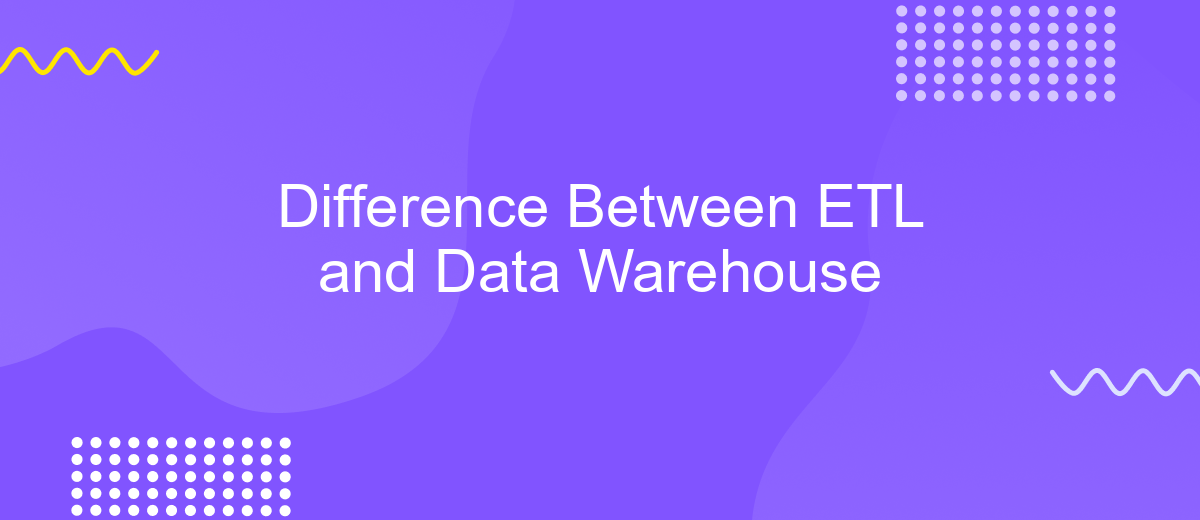Difference Between ETL and Data Warehouse
Understanding the difference between ETL (Extract, Transform, Load) and Data Warehousing is crucial for effective data management and analytics. While ETL refers to the process of extracting data from various sources, transforming it into a suitable format, and loading it into a destination system, a Data Warehouse is a centralized repository designed to store and manage large volumes of structured data for analysis and reporting.
Introduction
Understanding the difference between ETL (Extract, Transform, Load) processes and Data Warehouses is essential for businesses aiming to manage their data efficiently. While both concepts are integral to data management, they serve distinct purposes and offer unique functionalities.
- ETL: A process that involves extracting data from various sources, transforming it into a suitable format, and loading it into a target system.
- Data Warehouse: A centralized repository designed to store large volumes of structured data from multiple sources, enabling complex queries and analysis.
By leveraging services like ApiX-Drive, organizations can streamline their ETL processes, ensuring seamless data integration from diverse sources into their data warehouses. This not only enhances data accuracy but also facilitates better decision-making through comprehensive data analysis.
Key Differences

ETL (Extract, Transform, Load) and Data Warehouses serve different purposes in the data management ecosystem. ETL is a process that involves extracting data from various sources, transforming it into a suitable format, and loading it into a target system, such as a database or a data warehouse. This process is essential for data integration and preparation, ensuring that data is clean, consistent, and ready for analysis. On the other hand, a Data Warehouse is a centralized repository designed to store large volumes of structured data from multiple sources. It enables efficient querying, reporting, and analysis, providing a comprehensive view of the organization's data.
One of the key differences between ETL and Data Warehouses is their role in the data pipeline. ETL acts as a bridge, facilitating the movement and transformation of data, while a Data Warehouse serves as the final destination for this data, optimized for analytical processing. Additionally, ETL processes can be complex and time-consuming, often requiring specialized tools and services like ApiX-Drive to automate and streamline integrations. Conversely, Data Warehouses focus on data storage and retrieval, offering robust querying capabilities to support business intelligence and decision-making processes.
Use Cases

ETL (Extract, Transform, Load) and Data Warehouses serve different purposes in data management, and their use cases reflect these differences.
- ETL for Data Integration: ETL processes are crucial for integrating data from various sources into a unified format. For instance, businesses can use services like ApiX-Drive to automate the extraction of data from multiple APIs, transform it to meet specific requirements, and load it into a centralized database.
- Data Warehousing for Business Intelligence: Data Warehouses are designed to store large volumes of historical data, making them ideal for business intelligence and analytics. Companies can use data warehouses to generate reports, perform complex queries, and conduct trend analyses over time.
- ETL for Real-Time Data Processing: In scenarios requiring real-time data processing, ETL tools can be configured to handle streaming data, ensuring that the most current information is available for decision-making processes.
While ETL focuses on the movement and transformation of data, Data Warehouses provide a stable environment for storing and analyzing data. By leveraging both, organizations can ensure efficient data handling and insightful analytics.
Benefits

Understanding the benefits of ETL (Extract, Transform, Load) and Data Warehouses is essential for organizations looking to optimize their data management processes. ETL serves as the backbone for data integration, ensuring that data from multiple sources is accurately and efficiently processed before being stored in a Data Warehouse.
Data Warehouses, on the other hand, provide a centralized repository for all organizational data, enabling advanced analytics and reporting. This combination enhances decision-making and operational efficiency.
- Improved Data Quality: ETL processes clean and standardize data, ensuring consistency and accuracy.
- Centralized Data Repository: Data Warehouses aggregate data from various sources, making it easier to access and analyze.
- Enhanced Performance: Optimized queries and data retrieval improve performance and reduce latency.
- Scalability: Both ETL and Data Warehouses can scale to accommodate growing data volumes.
- Integration Capabilities: Services like ApiX-Drive facilitate seamless integration between various data sources and ETL tools.
By leveraging ETL and Data Warehouses, organizations can ensure that their data is accurate, accessible, and ready for analysis, ultimately driving better business outcomes and strategic insights.


Challenges
One of the primary challenges in implementing ETL processes is managing the complexity and volume of data. As organizations grow, the amount of data they generate increases exponentially, making it difficult to efficiently extract, transform, and load data without significant delays or errors. Additionally, ensuring the data's accuracy and consistency across various sources can be a daunting task. This requires robust data validation and cleansing mechanisms to maintain data integrity, which can be both time-consuming and resource-intensive.
Another significant challenge lies in seamlessly integrating diverse data sources into a centralized data warehouse. Different systems often have varying data formats, schemas, and protocols, complicating the integration process. Services like ApiX-Drive can facilitate these integrations by providing automated workflows that connect disparate systems, thereby reducing manual effort and potential for errors. However, even with such tools, continuous monitoring and maintenance are essential to handle evolving data landscapes and ensure the ETL processes remain efficient and reliable.
FAQ
What is ETL?
How does a Data Warehouse differ from a traditional database?
Why is ETL important for Data Warehousing?
Can ETL processes be automated?
What are the key components of a Data Warehouse?
Strive to take your business to the next level, achieve your goals faster and more efficiently? Apix-Drive is your reliable assistant for these tasks. An online service and application connector will help you automate key business processes and get rid of the routine. You and your employees will free up time for important core tasks. Try Apix-Drive features for free to see the effectiveness of the online connector for yourself.

